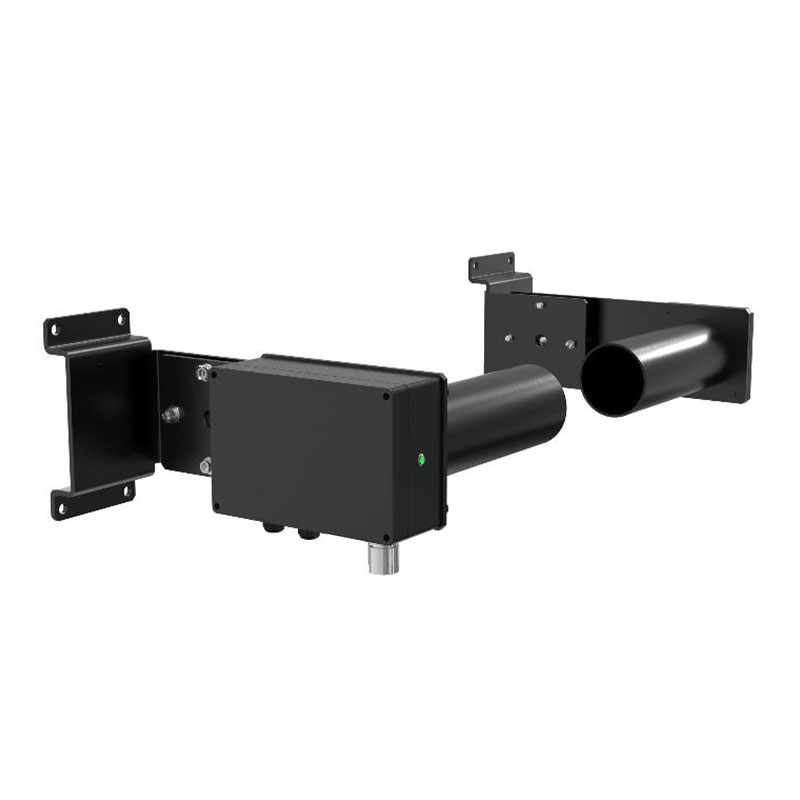Shandong Fengtu IOT Technology Co., Ltd
Sales Manager:Ms. Emily Wang
Cel,Whatsapp,Wechat:+86 15898932201
Email:info@fengtutec.com
Add:No. 155 Optoelectronic Industry Accelerator, Gaoxin District, Weifang, Shandong, China

Sales Manager:Ms. Emily Wang
Cel,Whatsapp,Wechat:+86 15898932201
Email:info@fengtutec.com
Add:No. 155 Optoelectronic Industry Accelerator, Gaoxin District, Weifang, Shandong, China

Model:FT-SDN1
Brand:fengtu
Tunnel visibility detector Product Introduction
Tunnel visibility detector A professional optical instrument that directly measures the visibility value and carbon monoxide content of the current weather.The Tunnel visibility detector detector operates based on the principle of transmission.The transmitter/receiver and reflector are installed opposite each other and aligned using a bracket.The highly focused beam emitted by the optical components becomes a detection beam.The installation distance is 3 meters (round trip dual-path, actual detection optical path is 6 meters).Due to dust attenuation, the receiver processes the received signal into a measurement value.It is installed on the tunnel ceiling or sidewall according to my country's "Specifications for Ventilation and Lighting Design of Highway Tunnels".
This intelligent detector has a built-in compensation function.When the optical lens is contaminated, it automatically performs gain compensation, thus ensuring a longer maintenance cycle.Tunnels are special tubular structures.Due to their small space and enclosed nature, exhaust fumes emitted by vehicles passing through tunnels, if not promptly and properly discharged, can cause the accumulation of CO and suspended particulate matter, directly affecting the personal safety of drivers, passengers, and maintenance personnel.
The SDN1 series is designed to collect VI/CO data online, providing it to traffic regulatory departments to provide decision-making basis for tunnel ventilation and road safety.
Tunnel visibility detector Product Features
1.Can simultaneously or separately measure visibility (VI) and carbon monoxide (CO);
2.High-resolution visibility measurement;
3.Measurement is completely unaffected by stray light sources;
4.Specifically designed for harsh tunnel environments;
5.Effectively avoids measurement failures caused by environmental factors and vibrations from passing vehicles;
6.Low installation, startup, and maintenance costs;
7.Built-in status display, fault alarm, and data storage functions for easy debugging and equipment maintenance;
8.Multiple output modes for convenient data acquisition;
9.Unique compensation function ensures a longer maintenance cycle;
10.Non-contact, continuous visibility monitoring;
11.Utilizes the latest microprocessor technology for fully digital operation.
Tunnel visibility detector Technical Parameters
Installation Method: Wall-mounted
Power Supply: AC 90-305V
Measured Values: VI value: 1/m,
CO concentration: PPM
Measurement Principle: Light projection method
Measurement Range: VI: 0--35×10-31/m,
CO: 0--1000PPM
Measurement Distance: 6-meter optical path (probe installation distance 3 meters)
Accuracy: VI: ±0.0001 1/m,
CO: ±1PPM
Output Interval: 10 seconds
Digital Output: RS485
Analog Signal Output: 3 channels 0/4mA-20mA (internal impedance not greater than 500Ω)
Data Update Rate: 6/min
Reliability: Mean Time Between Failures (MTBF) not less than 5000 hours
Automatic Compensation Function: VI has self-calibration and automatic zero-point function
Power Consumption: <15W
Ambient Temperature: -40~+75℃
Air Humidity: 0~100%RH
meteorological station A monitoring system established to acquire meteorological data, used on land or at sea, equipped with instruments and equipment for measuring atmospheric conditions....
The construction of ship weather stations is not only of great significance to marine scientific research, but also plays a very important role in safeguarding the development of the national economy. With the rapid development of my country's socialist modernization construction and the signifi...
Introduction to ultrasonic wind speed sensors, there are many ways to measure wind speed, but not many with high accuracy. Using the ultrasonic principle to measure wind speed is a very popular trend in recent years, and also based on this principle, ultrasonic wind speed sensors have appeared on th...
The fully automatic weather monitoring station consists of automatic weather station and cloud platform data management system. Based on the data collected by the automatic weather station, the data is processed by computer to realize real-time monitoring and analysis of changes in weather elements,...